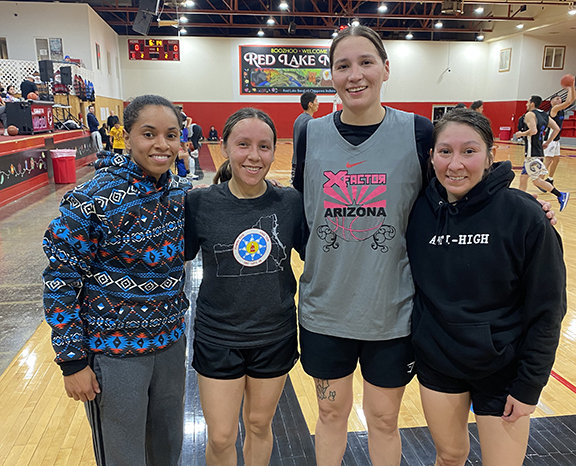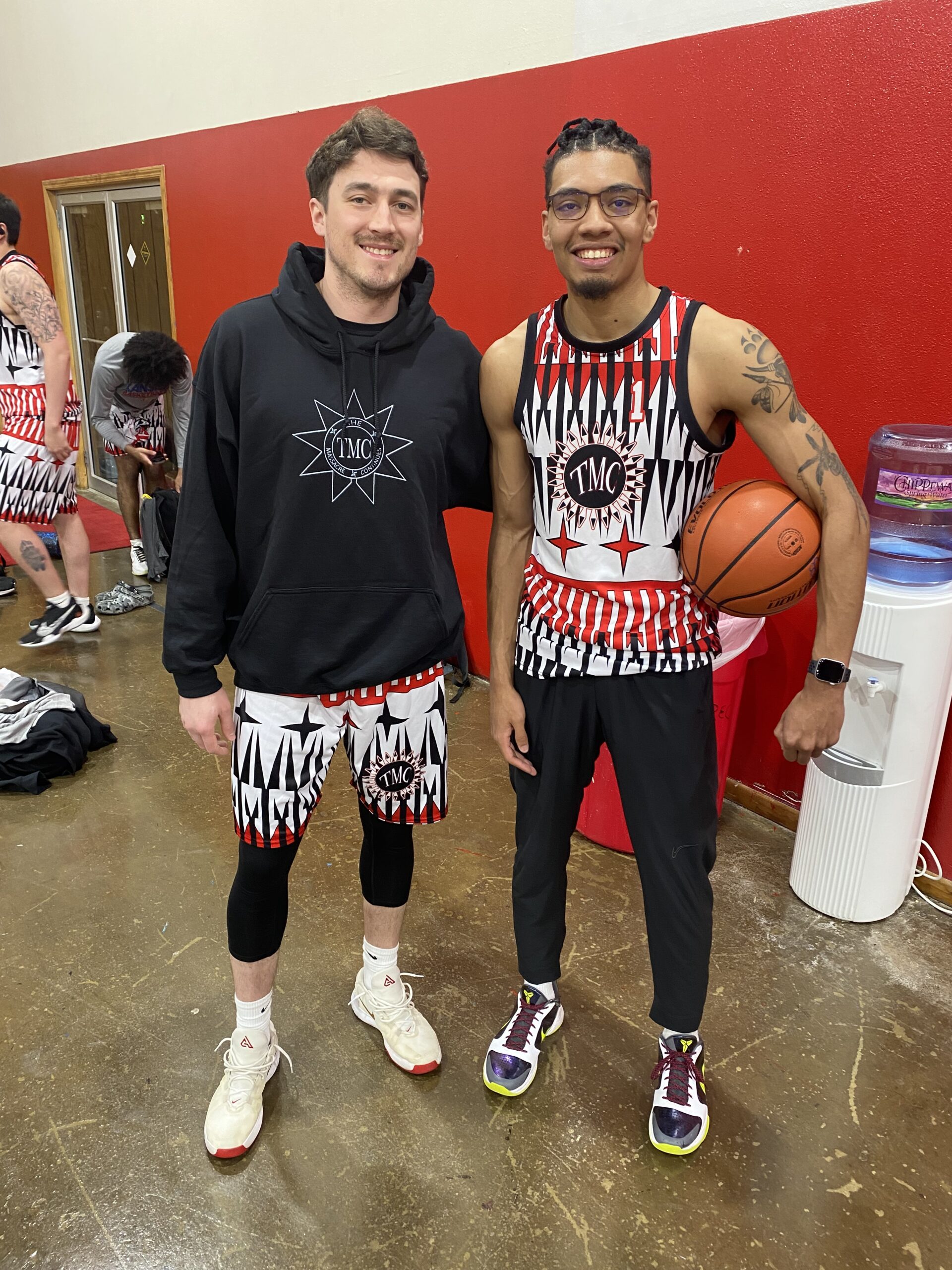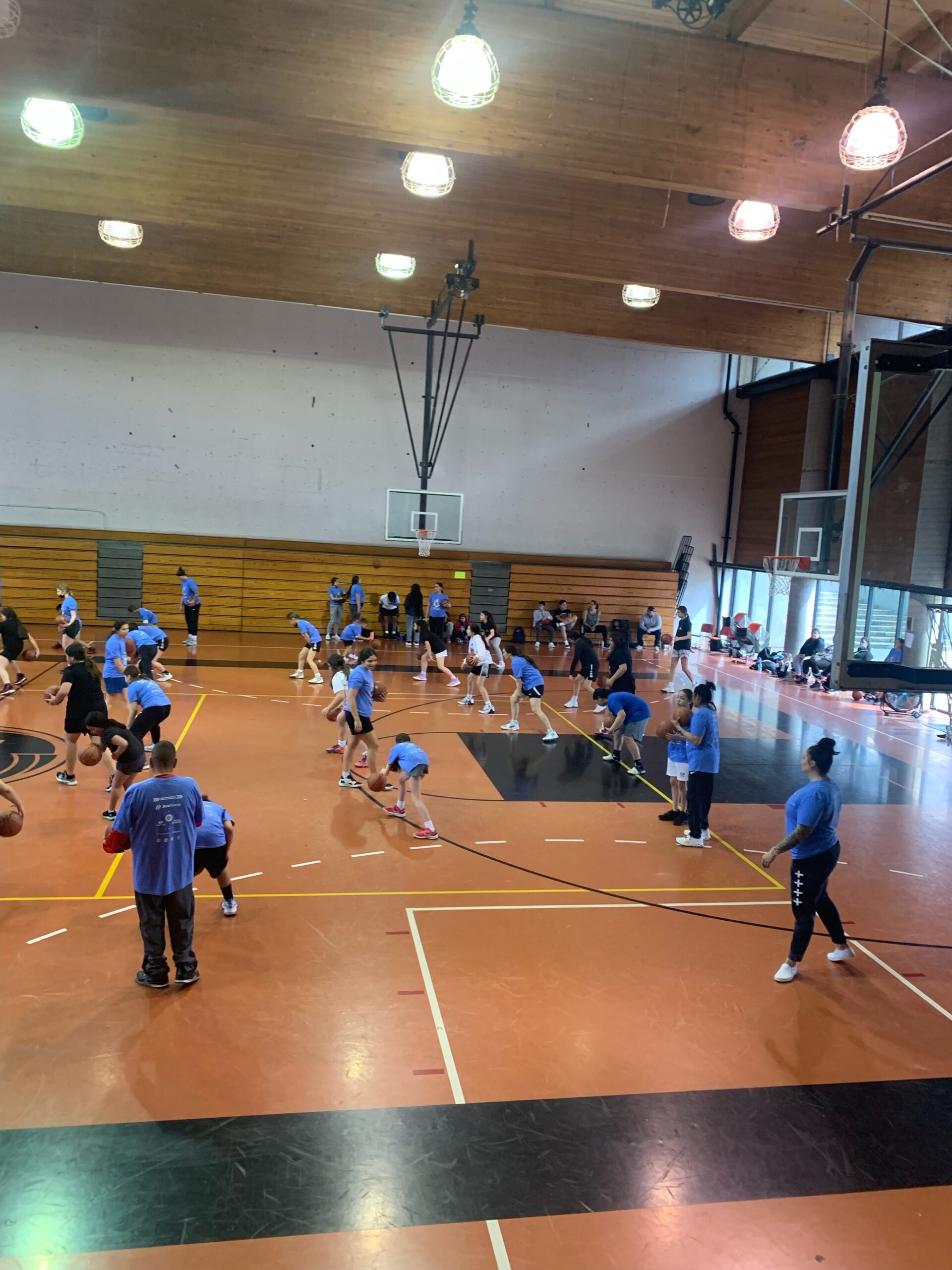
By Dan Ninham
The 2022 National Collegiate Athletic Association (NCAA) DI Women’s Final Four recently came to the big city of Minneapolis. University of South Carolina defeated the University of Connecticut 64-49 on Sunday, April 3rd.
The Indigenous Athletics Advancement Council (IAAC) also came to the big city with several initiatives to meet their goals. According to their website: www.indigenousathleticsadvancement.com the IAAC was formed to increase indigenous representation and engagement at the 2022 NCAA Women’s Final Four and beyond. The mission “is to educate, promote, empower, and activate indigenous people and communities around movement, physical fitness, and sport.”
The IAAC initiative began with former NCAA DI University of Wisconsin, WNBA player, and profession overseas player Jessie Stomski Seim (Muskogee Creek), and General Council for the Prairie Island Indian Community.
The indigenized Final Four event included a powerful halftime show during the first game of eventual national champion University of South Carolina and the University of Louisville. The halftime show included emcee Byron Ninham (Oneida), former NCAA D2 basketball player at the University of Minnesota Duluth, speaking Ojibwe and acknowledging the land; as well as singers and dancers.
The April 3rd events included a youth skills clinic at the Minneapolis American Indian Center (MAIC). The clinic was organized by Hoop Medicine founder Dominic Tiger-Cortes and featured several “Legends” including former NCAA DI native women basketball players.

The IAAC had a panel session at the Women’s Basketball Coaches Association (WBCA) Clinic. The session title was the theme of the IAAC: “Hoop Dreams in Native America: Why Indigenous athletes are under-represented in the NCAA, and how coaches can recruit and retain talent in Indian Country.” Attendees included various levels of NCAA, NAIA and NJCAA coaches.
“As a college coach attending the Women’s Final Four Coaching Convention, the IAAC panel was one of the most beneficial programs I attended,” said Taylor Harris, head women’s basketball coach at NCAA D2 Fort Lewis College in Durango, Colorado. “So many of my colleagues listened first hand from members of the IAAC about the benefits of welcoming Native student athletes to your program, how to effectively assist them to graduation, and how we can grow our own self cultural awareness.”
“I take pride in empowering native student athletes to get an opportunity to go to college, graduate, and go back to their reservation to make a difference in others’ lives,” said Harris. “The IAAC panel provided me with a much greater insight into the struggles Native athletes can face, and how I as a coach can help empower these amazing athletes to make a difference.”
During the NCAA Women’s Final Four, there was also a Final Four happening at the Red Lake Nation Humanities Gym. After an eight year absence, the Warrior Challenge was back with men and women brackets that drew 21 teams.
Shaunna Knife is from the Fort Berthold Reservation in North Dakota. She was on the X-Factor team that won the Warrior Challenge on the same day and 250 miles north of the NCAA DI national championship game. “Growing up, there wasn’t someone like myself being Native American I could look up to,” said Knife. “It was always the typical label that colleges don’t go after Native Americans, because they eventually leave. There was hardly any representation of Native American athletes as there is today here in North Dakota. I believe it is because we are breaking the barriers and making our younger generations know that they belong anywhere. There is a saying that I read not too long ago; ‘the rez was never deprived of talent, just resources.’”
Shauna Long, former NCAA D1 basketball player at Lamar University and Warrior Challenge champion talked about the IAAC initiatives: “I think it’s amazing to see such an important topic highlighted at a great stage like the Final Four. I do believe lack of exposure contributes to this underrepresentation because like me, not all native kids have the resources to get on the AAU circuit or come from large cities or school districts.”
“The information that they share is pivotal in assisting coaches on how they can seek out talent and also retain that talent. We often get placed into boxes of what people think we are, where we come from or the ‘benefits’ we may receive as being Native American,” added Long.
Rob McClain (Muscogee Creek/Red Lake Ojibwe) was the first NCAA D1 recruit from Red Lake High School at the University of Texas–Rio Grande Valley. McClain was on the TMC team that won the men’s division of the Warrior Challenge also on the night of the NCAA D1 Women’s National Championship game. He said, “Being a former D1 athlete is a huge thing for me and especially where I come from. With being the second D1 athlete from my rez is a big deal because out of all the great ball players that came before me I was the second one to play D1. The only person that went D1 before was my cousin Grace White and we graduated the same year, so knowing that is even more special.”

“So to see the growth firsthand with Natives around my age is huge and I cannot wait to see more of us get the opportunity to represent not only where we come from but Native country as a whole,” added McClain.
Justin McCloud (Turtle Mountain Ojibwe) played at NCAA D1 Illinois State University. He was the teammate of Rob McClain on the Warrior Challenge champions as well as with a few others that played at other college levels.
“I think growing up in North Dakota poses challenges in exposure and recruitment in general, but being native adds another layer,” said McCloud. “It seems like a good number of talented native athletes do not receive exposure to college coaches unless they play at a higher class school in the state. And the native athletes that do go to college end up back home within the first year or two.”
“I do believe more native athletes are getting exposure through organizations like IAAC, social media pages and leaders who advocate for the native youth, but more can still be done.”
“I think it starts at the local level with programs to help athletes get on AAU teams and sponsoring athletes that have dreams to play at the next level. It is then the responsibility of the athlete and their families to keep working hard to earn opportunities and represent for their respective tribe. It is very important to have a good support system and to figure out how to stick it out even when adversity hits or when it is uncomfortable.”
Watch the Women’s Final Four National semi-final game during half-time at: https://youtu.be/7jX2SK_KcuU






